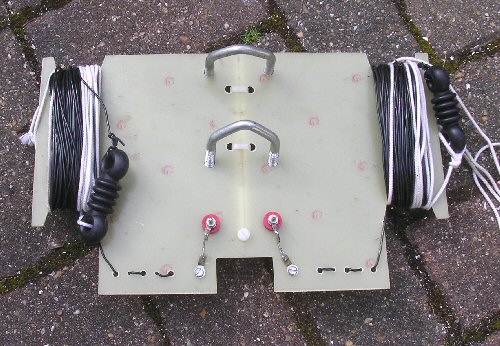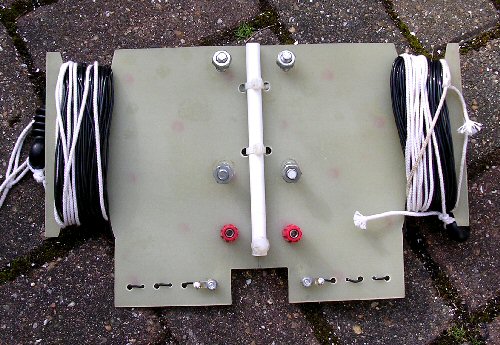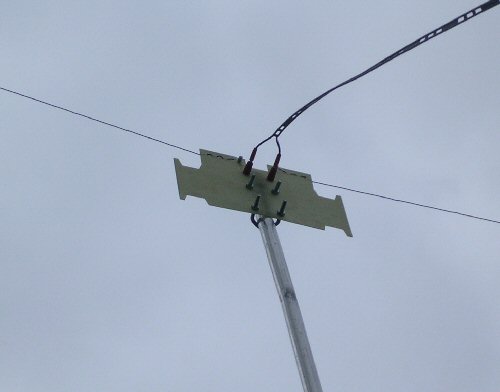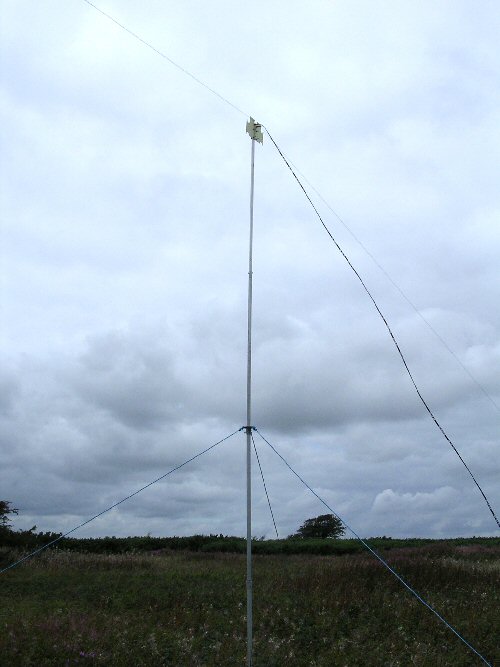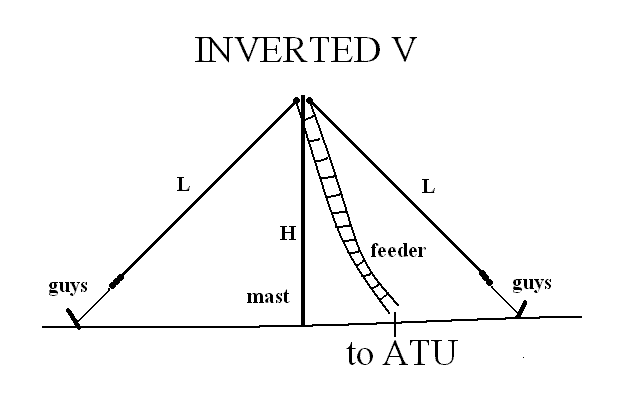
The basic inverted V antenna. Each side length L is a quarter wavelength for the lowest frequency so L=20m (65'). For an ideal apex angle of 90 degrees the mast height H would be over 14m. Lower mast heights will work but the antenna may not be omnidirectional (e.g. more like a dipole).
